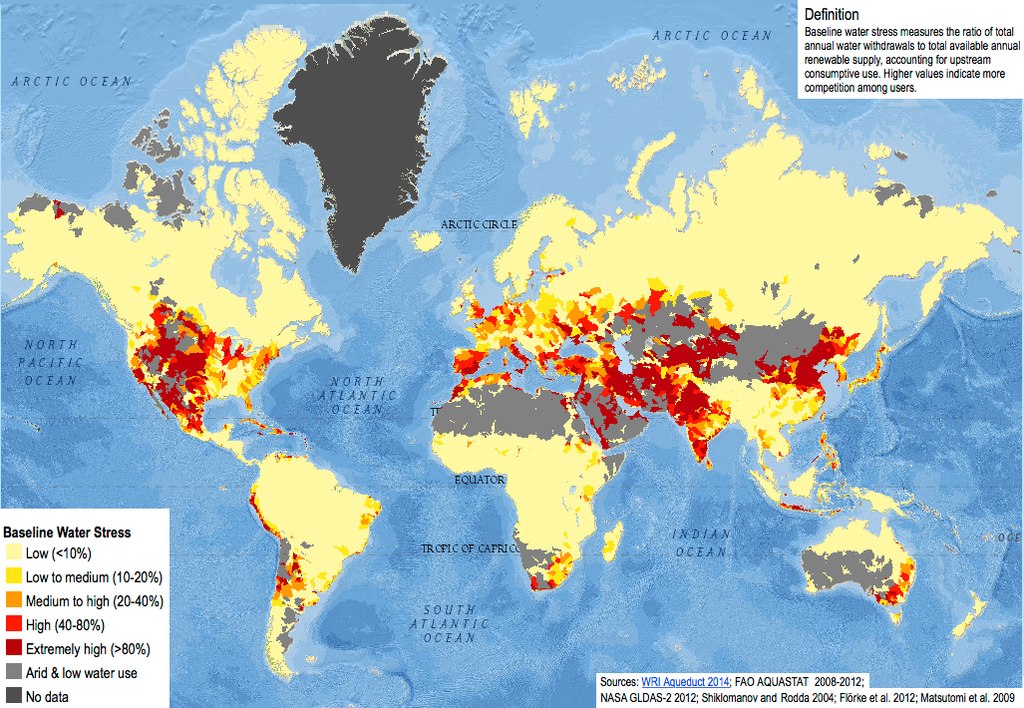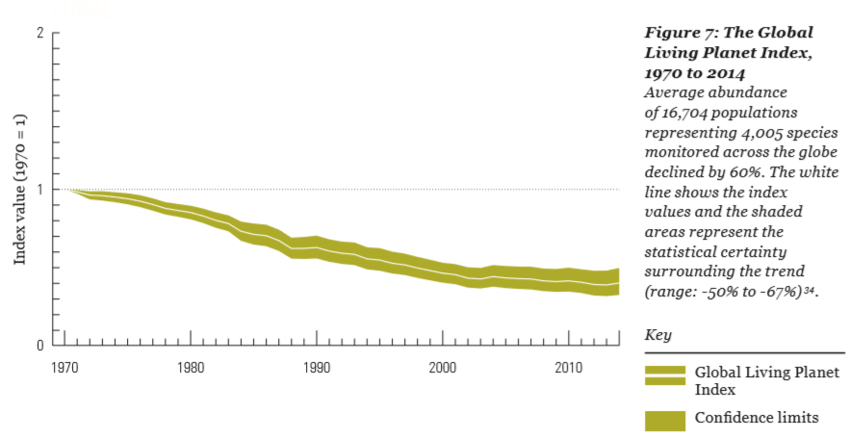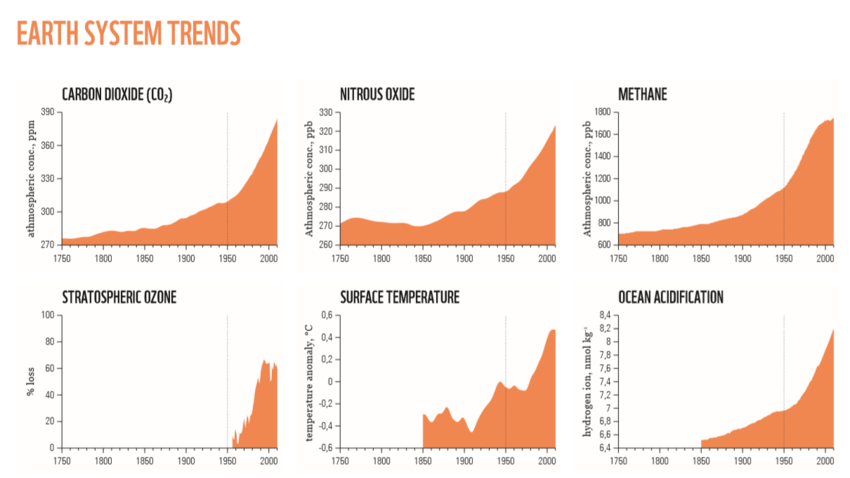I’m often amused and saddened by the techno-optimists among us and their fantasies of great futures. Or even the woke folks who think that color and gender and whatnot are the great political frontier.
Let’s run through this. Water.

Baseline Water Stress
New modeling of the world’s groundwater levels finds aquifers — the soil or porous rocks that hold groundwater — in the Upper Ganges Basin area of India, southern Spain, and Italy could be depleted between 2040 and 2060.
In the US, aquifers in California’s Central Valley, Tulare Basin, and southern San Joaquin Valley, could be depleted within the 2030s. Aquifers in the southern High Plains, which supply groundwater to parts of Texas, Oklahoma, and New Mexico, could reach their limits between the 2050s and 2070s, according to the new research.
The thing to understand about this is that it doesn’t show permanent aquifer damage. If you overdraw aquifers, they lose the ability to hold as much water; that reduction is permanent.
Then there is fracking and other forms of poisoning groundwater, though how much is difficult to determine. (It’s not small.)
Meanwhile, the next thing is that important rivers tend to be driven by snowpack runoff and glaciers, but snowpack is becoming less and less and glaciers are receding. We’re talking about rivers like the GANGES and the Yangtse, not to mention all the European rivers which start in the Alps.
So we have groundwater depletion, some of it permanent. We have poisoned groundwater, and we have a reasonable expectation of reduced water in rivers, which in some cases will dry up entirely.
Let’s move on to more fun stuff: ecosystem collapse.

Wildlife Reduction
This number is from 1970, which was already very reduced. You can read accounts of what the Grand Banks were like originally: They could literally dip a pail into the ocean and come up with fish. We’ve massively reduced wildlife everywhere, insect populations are collapsing, and so on. Recent estimates are that the Amazon is no longer a net producer of oxygen, but now produces Carbon Dioxide.
Phytoplankton produce half the world’s oxygen. From 1950 to 2010, the population of phytoplankton dropped 40 percent. We can safely assume losses were not even, but are accelerating.
The general picture in terms of climate change is all bad:

Climate Dashboard 2018
Note that first graph very carefully. There is NO sign in the actual numbers that we are doing anything of importance to stop this trend. Kyoto and Paris have achieved nothing, which is to be expected, since they were voluntary.
Let’s put this all together: massively rising temperatures; more extreme weather events; changes in climate, including rainfall patterns; massive depletion of aquifers at the same time as we can expect many rivers to lose volume or dry up; no effective political action.
One thing that India’s Covid crisis clarified for me is that India won’t be able to handle climate change, so let’s make some predictions.
India breaks up within 20 to 30 years. It dies amid great famines which kill two hundred million or more people. Bangladesh, of course, will go oven sooner, and unleash a tsunami of over 150 million refugees which India does not want, as they are mostly Muslim.
China breaks up 30 to 45 years from now and descends into warlordism. Prior to the breakup, there is a better-than-even chance of war with Russia for Siberia. Again, hundreds of millions of deaths.
The US is going to hurt worse than is obvious: Core areas will hit depletion, and many rivers will dry up. Large chunks of the Southwest will become completely uninhabitable. California’s population carrying capacity will drop massively, unless it moves to mass de-salinization (a dicey prospect).
We’ve just had ourselves a lesson in what exponential growth looks like. There is every reason to expect that at least some parts of ecosystem collapse and climate change will act that way: When break points are reached, they will accelerate, and nothing we can do will stop them. Worst case scenario is a hothouse Earth in which humanity goes extinct, but entirely plausible scenarios see the Earth losing half or more of its carrying capacity. The process will involve a lot of death, suffering, and war.
There’s a decent chance we get a marine inundation event. Rather than water rising by small amounts every year, at some point it rises very quickly, and large amounts of the coast flood permanently.
Remember that the “moderate” estimates have almost all been wrong. The “worst case” scenarios, for decades now, have been coming in correctly.
All of which is to say, whatever future you think you’re going to have, you need to run it past this lens. Does it survive this? Does society spend resources on whatever it is in the face of hundreds of millions of deaths and billions of refugees?
So, no, your future, whatever it is, unless you can instantiate it in the next two decades, probably isn’t going to happen.
The clock is ticking, we are running out of time to do whatever it is we want to do, and it is very likely that we are past the point of no return; that even if we were to go all-out to stop climate change and environmental collapse (we won’t), we could — at best — limit it to “losing half the population.”
lf you’re old enough, none of this matters, of course. But we are now at the point where, if you aren’t 60 and in poor health, or 70 and in good health, you’re probably going to get see at least the start of the really bad times.
We’ll come back to what this means in more depth later, but for now, just make your plans based on this understanding of what the future holds.
(Writers eat and pay rent, so subscriptions and donations help.)
